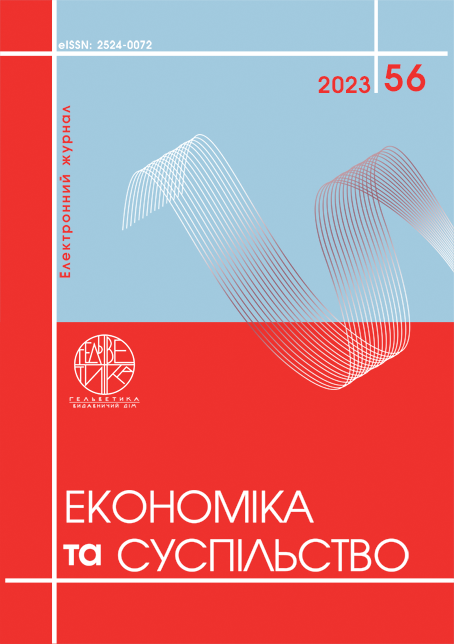OPTIMIZATION OF ELECTRICITY COSTS AT CRUSHING FACTORIES IN CONDITIONS OF MULTI-ZONE TARIFF FOR ELECTRICITY
Abstract
The article is devoted to the topical issues of optimization of electricity costs at crushing plants in the conditions of a multi-zonal electricity tariff. Therefore, there is a problem of determining the optimal batch and period of supply of raw materials in the conditions of a multi-zonal tariff for electricity based on the criterion of minimizing the total cost of delivering ore and electricity for its processing. The purpose of the article is economic-mathematical modeling and optimization of ore supply and crushing processes based on the criterion of total supply costs and electricity costs during ore crushing under the conditions of single-zone and multi-zone electricity tariffs. The research is based on the use of operations research methods and the theory of inventory management in the construction of economic and mathematical models. Optimization of the models was carried out by classical methods of finding the extremum of functions according to the criterion of minimum total supply costs and electricity costs during ore crushing. Based on the results of the research, economic and mathematical models of complex optimization of ore supply and crushing processes in the conditions of single-zone and multi-zone tariffs for electricity are proposed. The scientific novelty of the research lies in the fact that for the first time economic and mathematical models of complex optimization of ore supply and crushing processes have been obtained in the conditions of a multi-zone electricity tariff. It was established that the optimal batch of ore supply depends non-linearly on the ore supply plan, the cost of ore supply and crushing, the zonal electricity tariff and its duration. According to the results of the study, it was established: with a multi-zone tariff for electricity, the optimal batch of raw materials supply non-linearly depends on the planned demand for raw materials, the cost of processing and supply, the zonal tariff for electricity and the time of its operation; when planning the supply of raw materials under conditions of a multi-zone tariff for electricity, the number of deliveries and the delivery period are determined separately for each zone of validity of the tariff for electricity. The practical value of the article lies in the development of a methodology for determining the optimal plan for the supply of ore by the mining and transport complex to the crushing plant, namely the optimal batch and period of supply under the conditions of a multi-zone electricity tariff, which allows to minimize the total costs of ore supply and crushing.
References
Горенко А. А., Кочура Є. В. Формування собівартості продукції дробарних фабрик в умовах багатозонального тарифу на електроенергію. Дніпропетровськ: Національний гірничий університет, 2012. 146 с.
Кравець В. Г., Темченко О. А., Темченко Г. В., Тайєб-Тамаша Я. Економіко-технологічні передумови формування програми енергозбереження на гірничорудних підприємствах. Вісник НТТУ «КПІ». 2015. Вип. 27. С. 66–76.
Максимов С. В., Темченко Г. В. Дослідження енергомісткості витрат гірничорудних підприємств. Економічний вісник НГУ. 2012. №2. С. 52–56.
Horenko, A. A., Kochura, Ye. V. (2012). Formuvannia sobivartosti produktsii drobarnykh fabryk v umovakh bahatozonalnoho taryfu na elektroenerhiiu [Formation of the cost price of products of crushing factories in the conditions of a multi-zonal electricity tariff]. Dnipropetrovsk: National Mining University, 146 р. (in Ukrainian)
Kravets, V. H., Temchenko, O. A., Temchenko, H. V., Taiieb-Tamasha, Ya. (2015). Ekonomiko-tekhnolohichni peredumovy formuvannia prohramy enerhozberezhennia na hirnychorudnykh pidpryiemstvakh [Economic and technological prerequisites for the formation of an energy saving program at mining enterprises]. Visnyk NTTU «KPI», vol. 27, pp. 66–76.
Maksymov, S. V., Temchenko, H. V. (2012). Doslidzhennia enerhomistkosti vytrat hirnychorudnykh pidpryiemstv [Study of the energy consumption of mining enterprises]. Ekonomichnyi visnyk NHU, no 2, pp. 52–56.

This work is licensed under a Creative Commons Attribution 4.0 International License.


